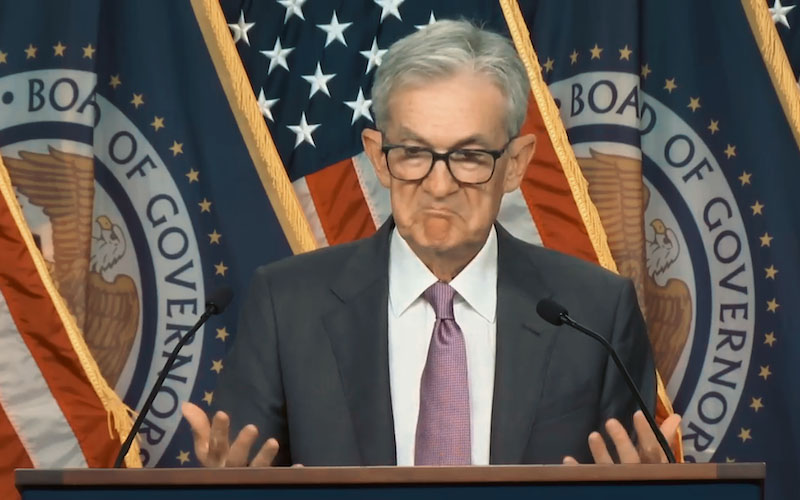How can the EU reach a trade agreement in the "game of cowardice" under Trump's tariff threat?
2025-07-19 00:08:59

The EU’s “four-pronged” strategy
On July 18, 2025, Michal Baranovski, Deputy State Secretary of the Polish Ministry of Economic Development and Technology, outlined the EU's four-part strategy to respond to Trump's tariff threats in an interview.
Good Faith Negotiation
The EU remains committed to a negotiated solution, and EU Trade Commissioner Maroš Šefčović is actively engaging with US counterparts, including US Trade Representative Jamison Greer and Commerce Secretary Howard Lutnick. Despite Trump's July 11 letter raising tariffs from an expected 10% to 30%, the EU is pushing for a framework agreement that could include sectoral exemptions. European Commission President Ursula von der Leyen stressed that the EU prefers dialogue: "The EU has always prioritized a negotiated solution with the United States, which reflects our commitment to a stable and constructive transatlantic partnership."
Preparing countermeasures
The EU has delayed retaliatory measures to focus on negotiations, but has prepared two sets of countermeasures targeting 93 billion euros ($108 billion) of U.S. imports, including wine, bourbon, aircraft and chemicals. The first set of measures targets 21 billion euros of U.S. goods in response to the 50% tariffs imposed by the United States on steel and aluminum, while the second set of measures targets 72 billion euros of U.S. goods in response to Trump's "reciprocal" tariffs. French President Emmanuel Macron urged the EU to speed up its preparations for countermeasures, including the possible use of the EU's "anti-coercion tools" to counter U.S. economic pressure.
Coordination with other countries
The EU is consulting with other US trading partners such as Canada, Mexico, Japan and South Korea to understand their response strategies to Trump's tariffs. Baranovsky pointed out that coordination is not the goal, but sharing insights will help the EU assess the global response. This is consistent with reports that the G7 countries are showing a growing sense of urgency about the risk of a wider trade war.
Improving European competitiveness
The EU is focusing on strengthening its economic resilience to mitigate the impact of potential tariffs. This includes increasing investment in technology and energy, areas where the EU has previously made concessions to the US. Baranovsky stressed that the EU-US trade relationship is vital to both sides, and "both sides have equally significant gains and losses."
Trump’s tariff threats and the “TACO” factor
Trump’s announcement of a 30% tariff on EU and Mexican goods starting August 1, 2025 continues his pattern of escalating trade threats. White House press secretary Carolyn Levitt dubbed his strategy “TACO” (Trump always chickens out), reflecting his tendency to announce high tariffs first and then postpone or reduce them. For example, Trump previously reduced tariffs on Chinese goods from 145% to 30% after negotiations and extended the suspension of tariffs on the EU from July 9 to August 1.
Berenberg Bank economist Solomon Fidler is optimistic, noting that the August 1 deadline set by Trump suggests there is still room for negotiation: "The fact that Trump has only threatened to implement the new 30% tariff from August 1, rather than sooner, suggests that he is still looking to negotiate." He added that Trump's history of compromise could bring the final tariff closer to 15%. However, Jon Flake of the Atlantic Council warned that there is no "magic solution" because the EU has made concessions such as increasing purchases of US energy and technology investments, but these may not meet Trump's demands.
Auto Tariff Parity Proposal
A key element of the EU's negotiating strategy is the proposal to implement reciprocal tariff cuts on automobiles. The Financial Times reported on July 17, 2025 that the EU is ready to reduce its 10% tariff on US auto exports, provided that the Trump administration reduces tariffs on European cars to below 20%. Previously, Trump imposed a 25% tariff on foreign-made vehicles, which dealt a heavy blow to European automakers such as Sweden's Volvo Cars, causing its operating profits to fall sharply in the second quarter of 2025. The EU's proposal is aimed at protecting its automotive industry, which is a pillar industry in economies such as Germany. The German Chamber of Commerce warned that a 30% tariff would "hit the heart of Germany's export industry."
However, Jakob Fink-Kirkegaard of the Bruegel Institute warned that Trump's erratic behavior, including threats of retaliatory tariffs if the EU takes reciprocal measures, could undermine trust in the negotiations. Bernd Lange, chairman of the European Parliament's trade committee, said: "This is a slap in the face of the negotiations," highlighting the difficulty of dealing with an erratic negotiating partner.
Expert opinion
Jacob Fink-Kirkegaard of the Bruegel Institute said, "Trump's letter increases the risk of retaliatory measures from the EU, similar to how U.S.-China trade frictions previously shook financial markets." He noted that Trump's pattern of escalating and then downgrading tariffs is similar to past U.S.-China trade dynamics, but the EU's response will depend on whether Trump makes good on his threats.
ING economists Carsten Brzeski and Jonas Fechner said the EU could respond to Trump's tariffs by increasing purchases of U.S. soybeans or military equipment, reducing existing tariffs on U.S. cars, or imposing export bans on key European goods such as medicines. But direct retaliation, such as tariffs on U.S. digital services or stricter regulation of U.S. technology companies, could trigger a "full-blown trade war."
French Secretary of State for European Affairs Benjamin Haddad believes that the EU needs to show "strength, solidarity and determination" in the negotiations, and advocates that if the negotiations fail, the EU's "anti-coercion tools" can be used to target US technology giants.
Wider impact
The EU's 198 billion euro goods trade surplus with the United States in 2024 has long been a point of contention for Trump, who sees it as reflecting an unfair trade relationship. The proposed 30% tariffs could disrupt transatlantic supply chains, affecting industries from German automakers to Irish pharmaceutical companies. German Chancellor Friedrich Merz and Italian Foreign Minister Antonio Tajani called for pragmatic negotiations to avoid a trade war, with Tajani noting that the EU has prepared a 21 billion euro tariff package if talks break down.
Bloomberg reported that the EU is also reaching out to other countries affected by tariffs, reflecting its broader strategy to mitigate the global impact of Trump's policies. For example, South Korea has expressed its willingness to give the United States deeper access to its agricultural product market to avoid tariffs, and the EU is closely watching this development.
- Risk Warning and Disclaimer
- The market involves risk, and trading may not be suitable for all investors. This article is for reference only and does not constitute personal investment advice, nor does it take into account certain users’ specific investment objectives, financial situation, or other needs. Any investment decisions made based on this information are at your own risk.










